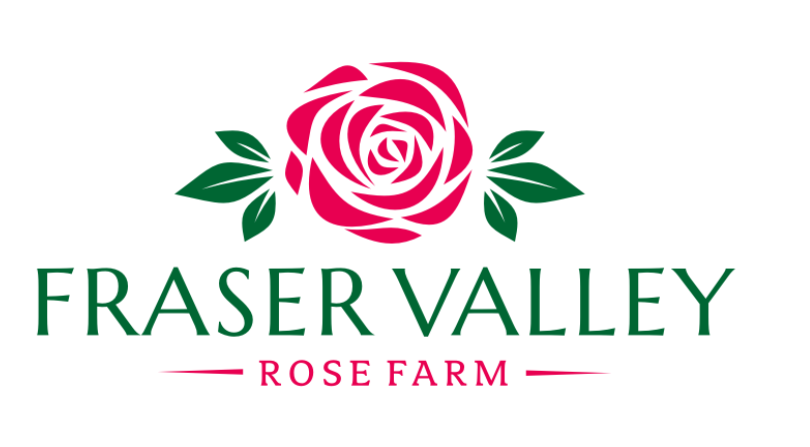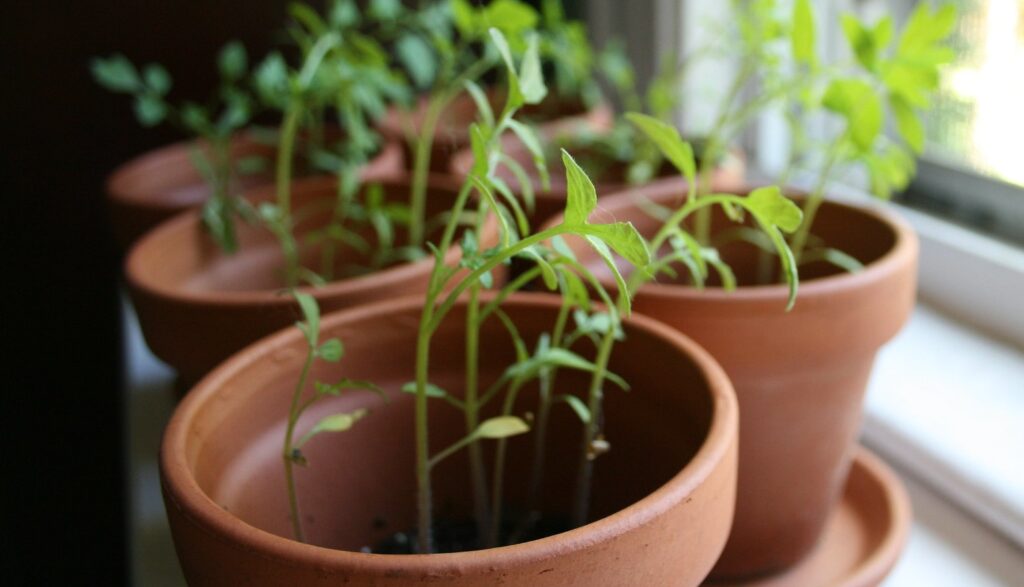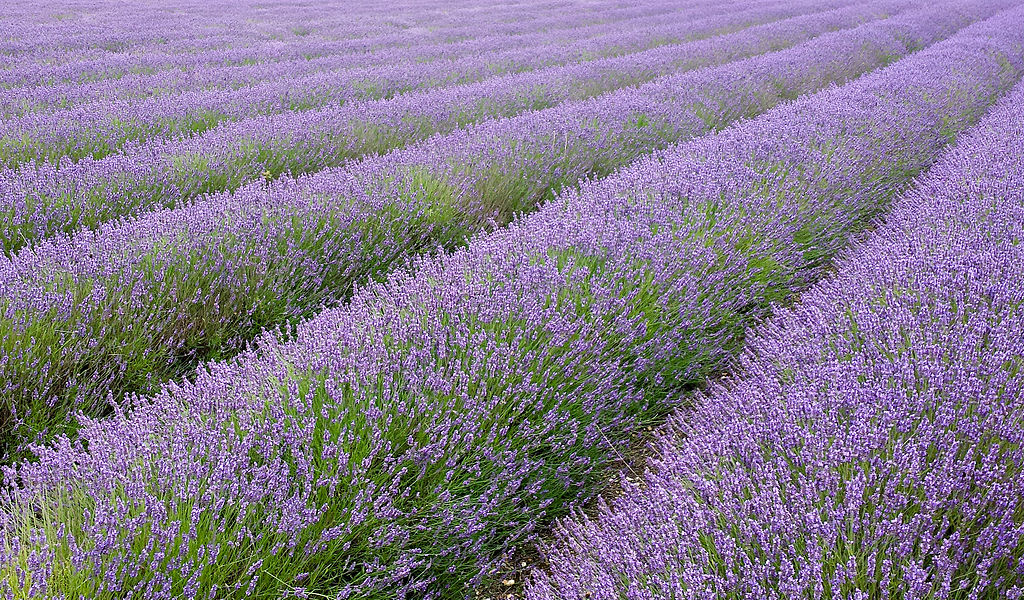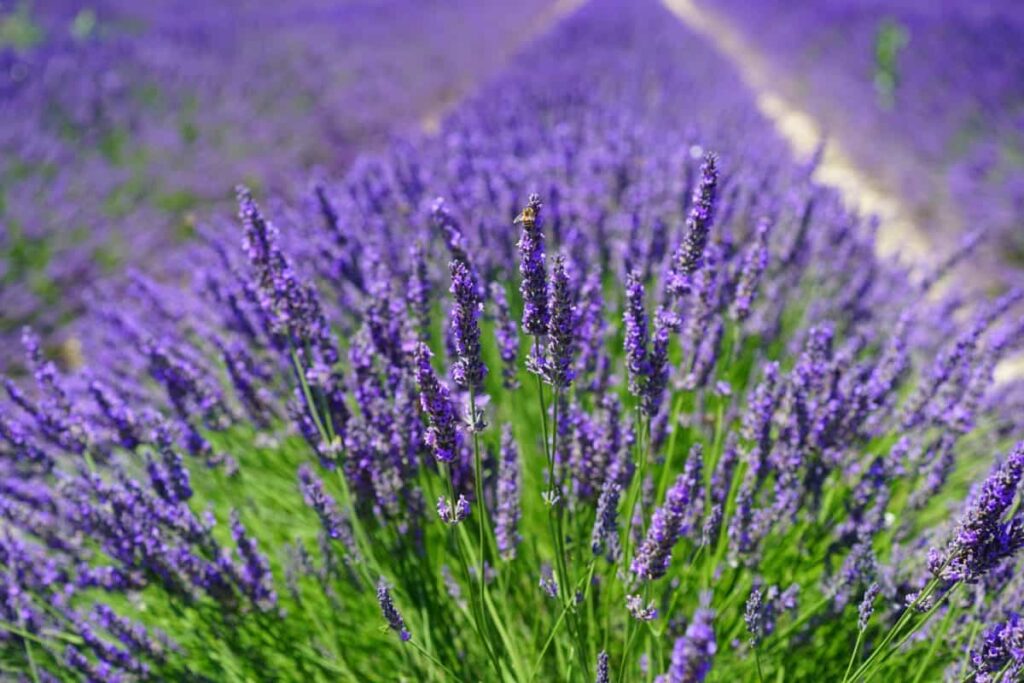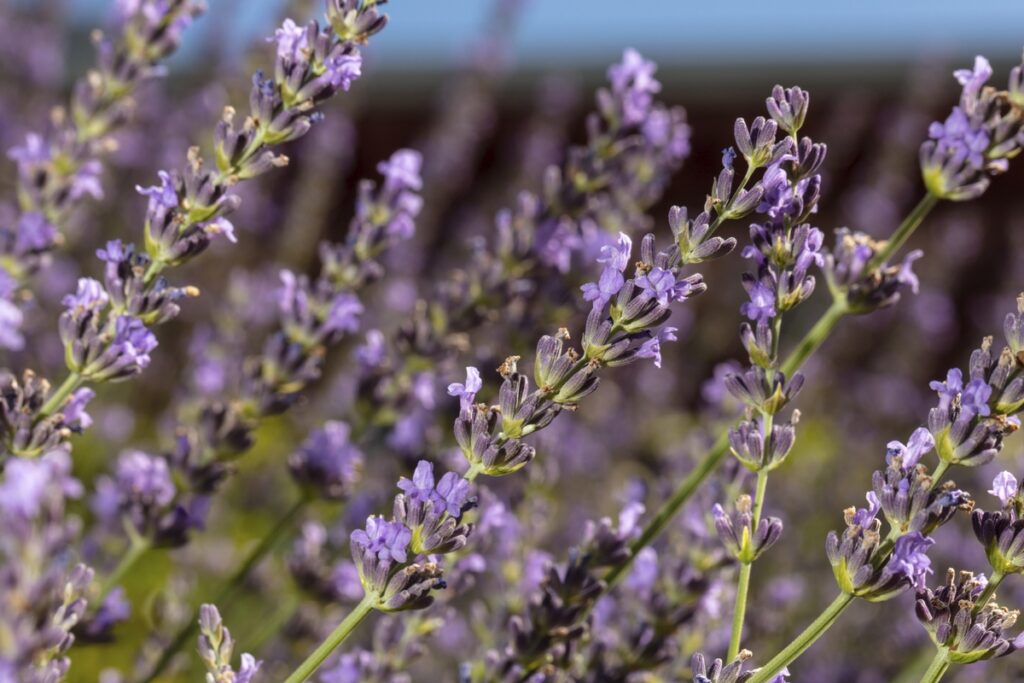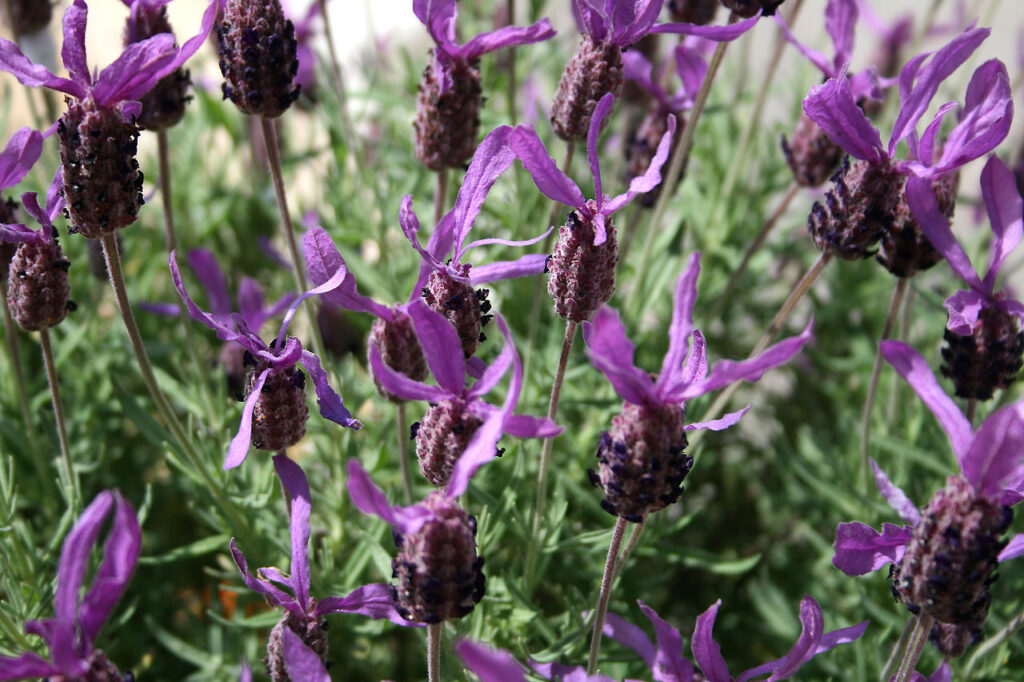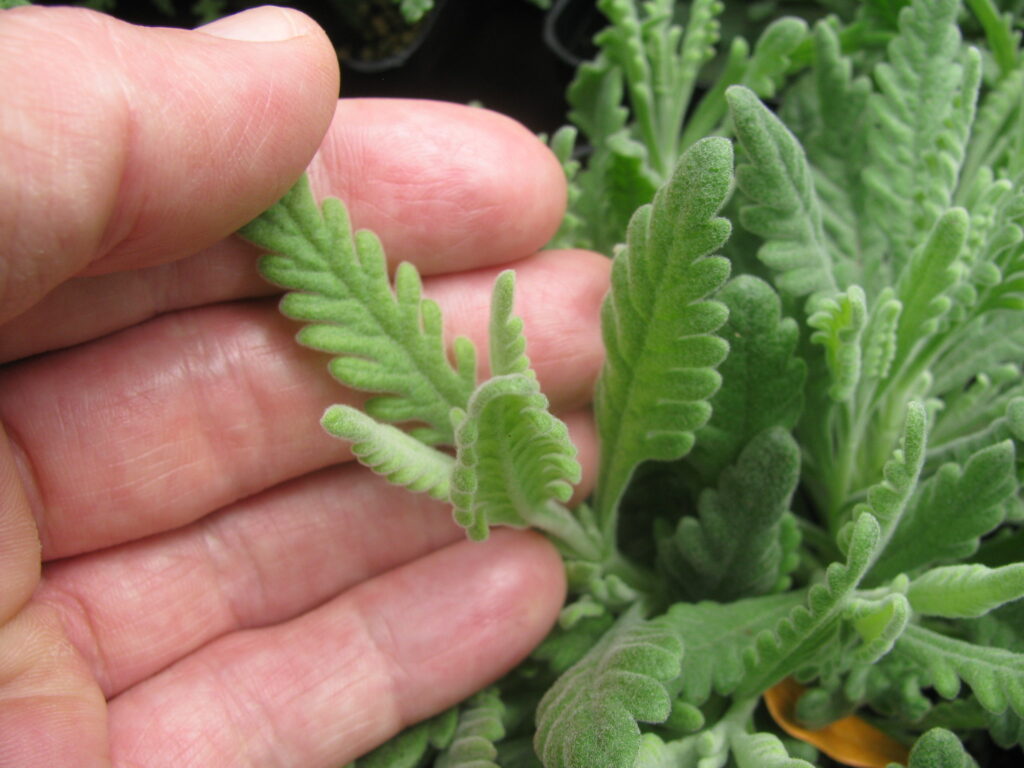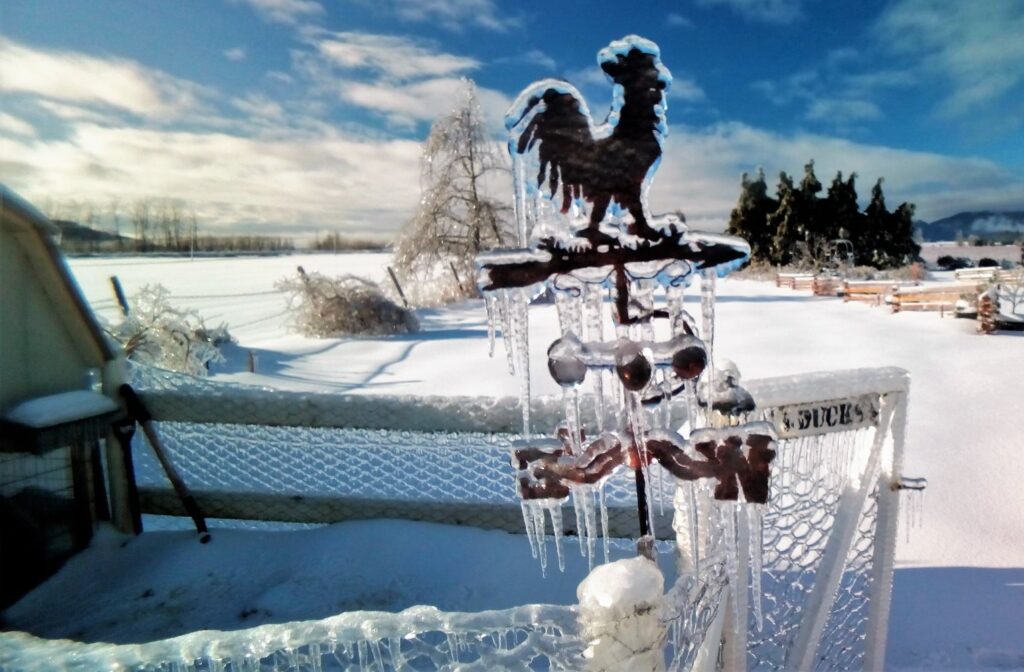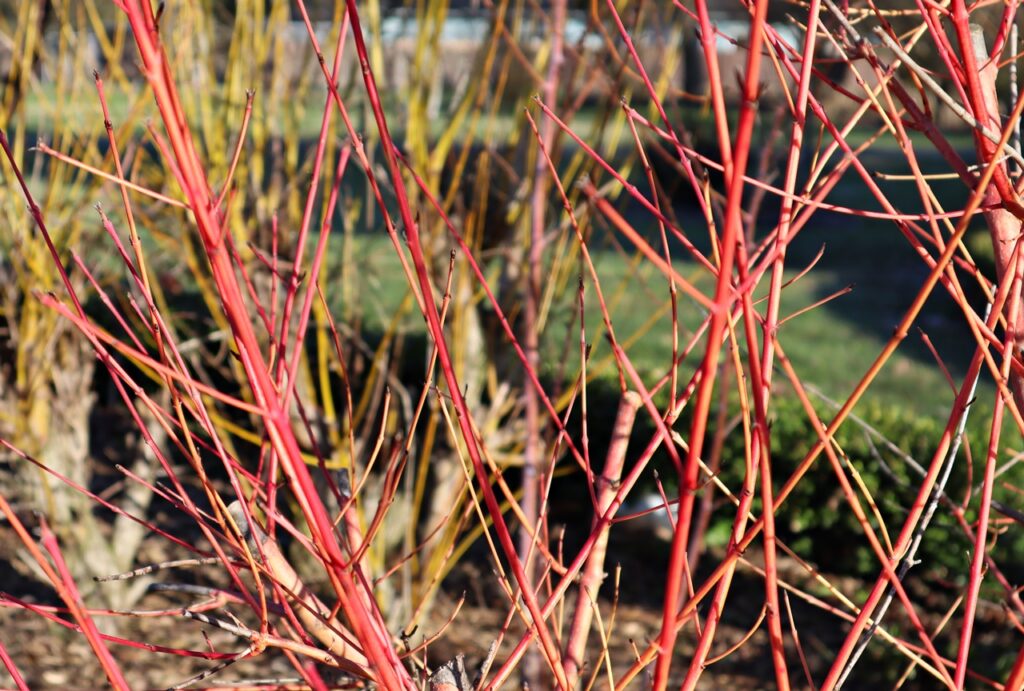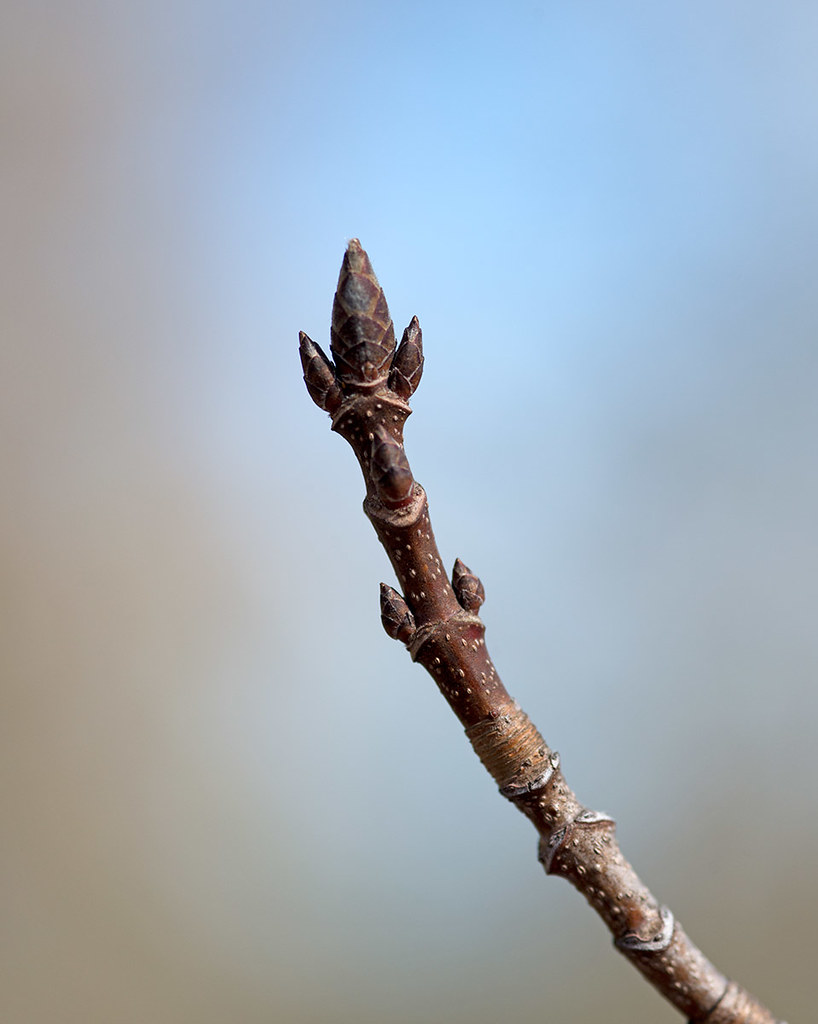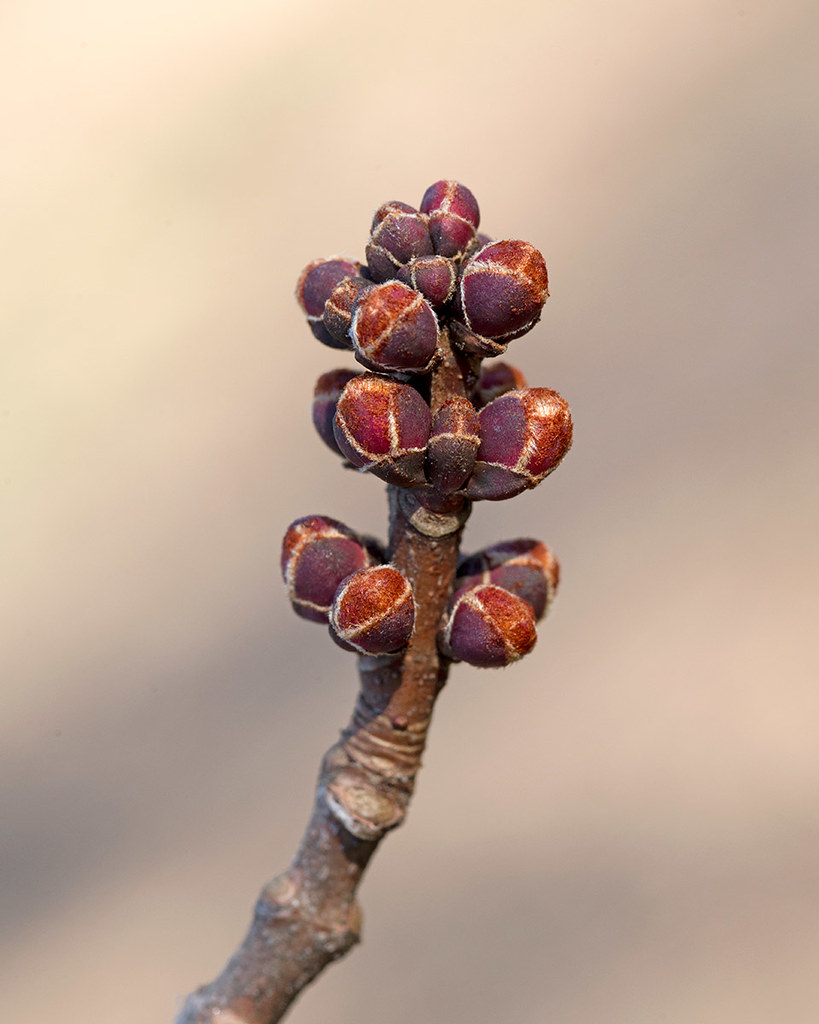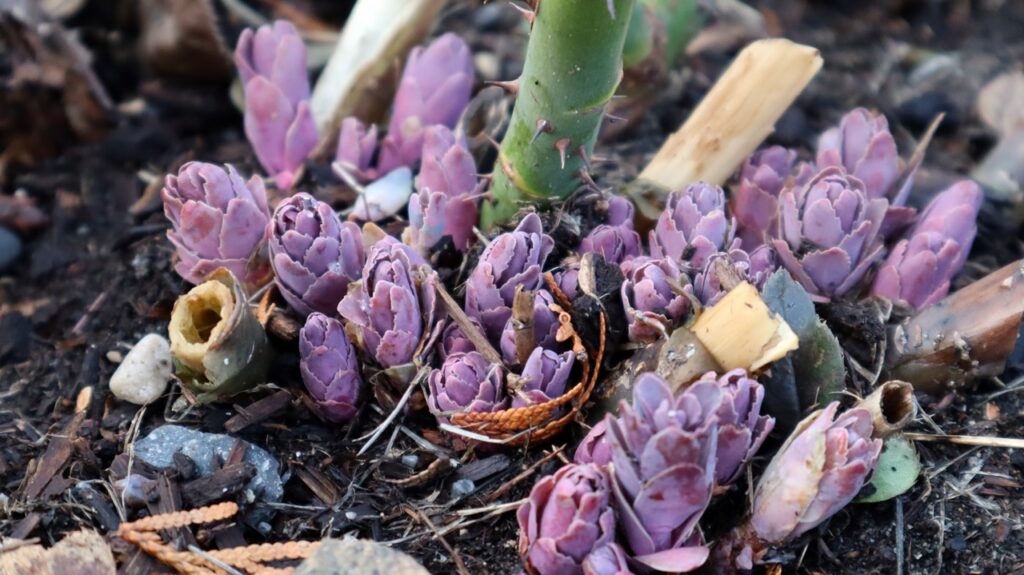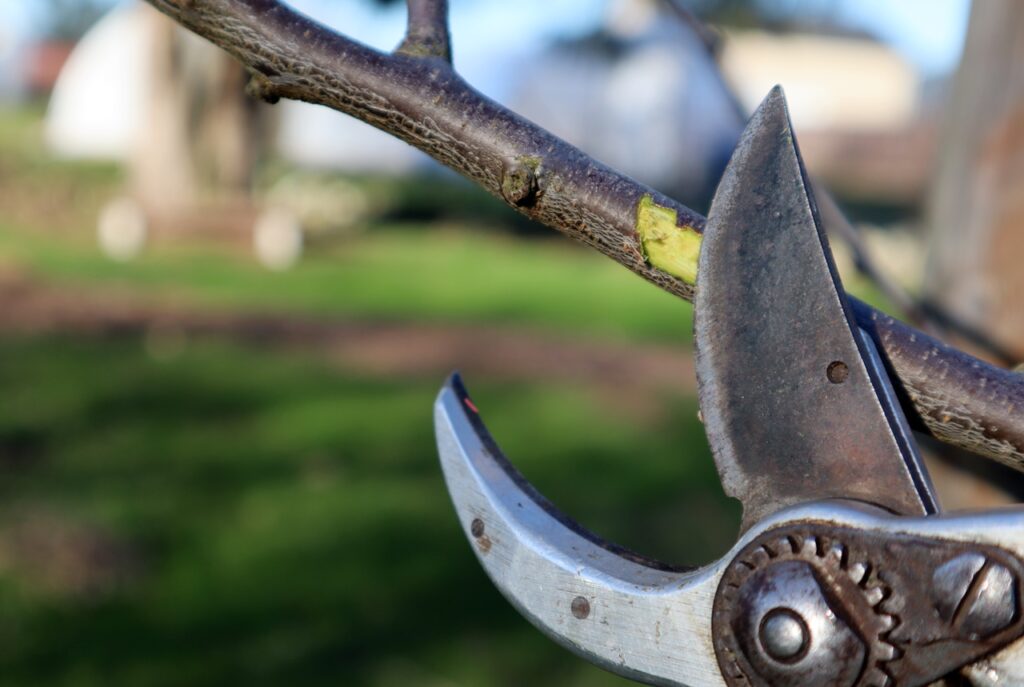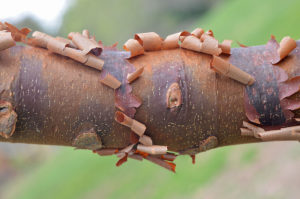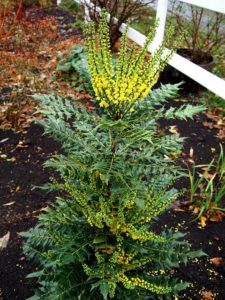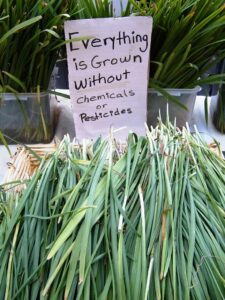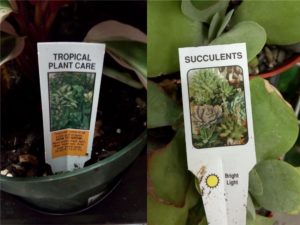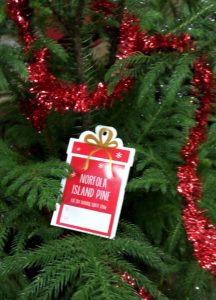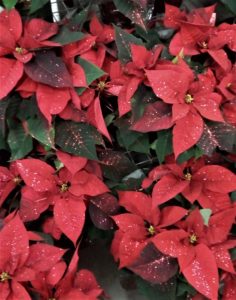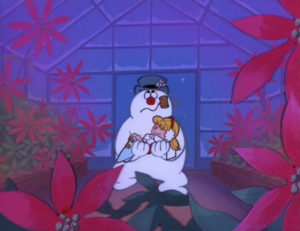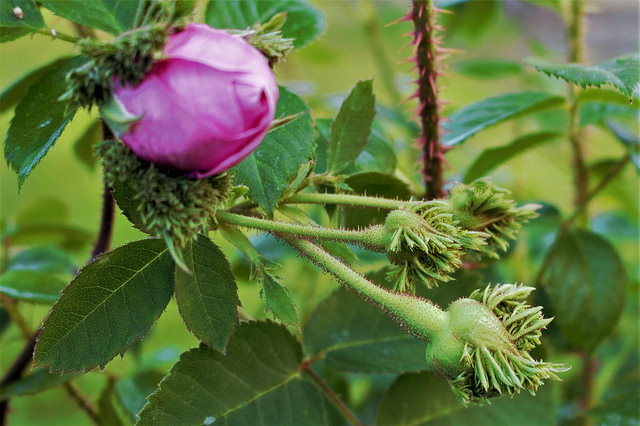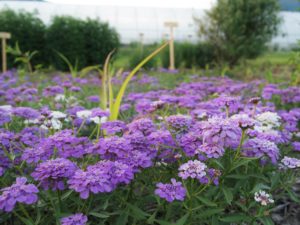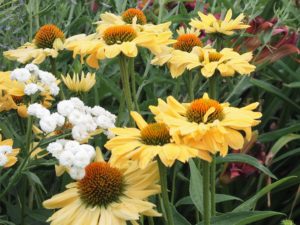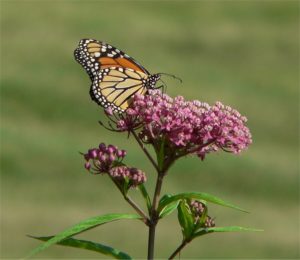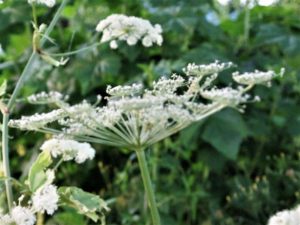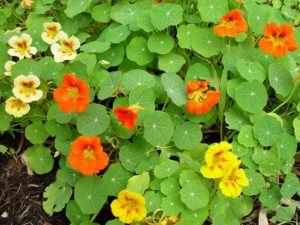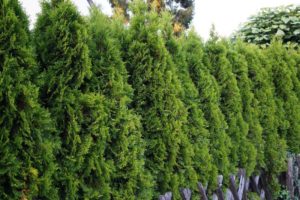Most aphids are born pregnant. I say this both as a fun bit of trivia and to make a point: even more than other insect pests, they’re biologically fine-tuned for fast reproduction without any of the “fun stuff” to slow down the process. As in the below picture, the mother aphid doesn’t even interrupt feeding to pop out a genetic clone of herself, which in turn begins feeding on the plant and developing her own clones.
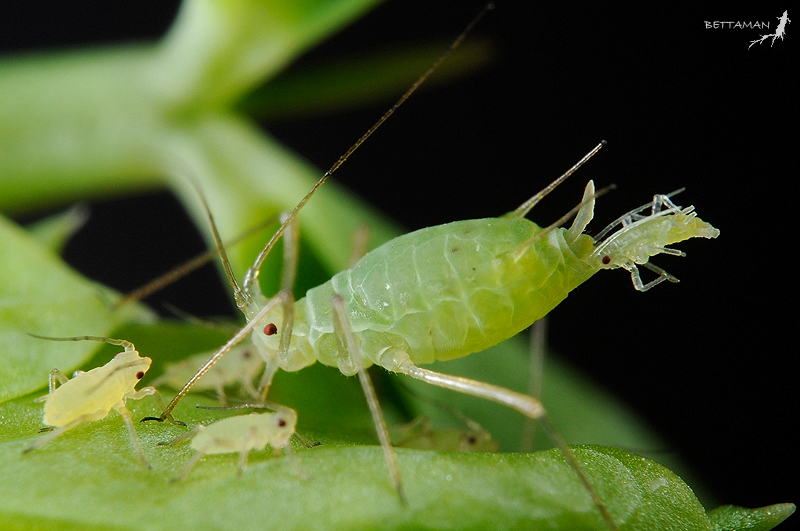
Aphids aren’t fast-moving themselves, but with this biology, they’re extremely quick to reproduce when there’s plenty of food. The food that fuels them best, as you may have noted in your own garden, is the fresh lush growing tips of plants. They’ll seemingly appear from nowhere to absolutely smother the fresh shoots of a rose or the vigorous young leaves of broccoli.
The usual question (and the title of this article) “How to Get Rid of Aphids” is both absurdly easy to answer and also difficult to fully explain. They’re easy to remove or kill. You can spray them off the growing tips with a sharp jet of water. You can smush them with your fingers if you’re not too squeamish. You can spray them with any of the usually usually recommended garden sprays: insecticidal soap, oil, or wettable sulfur. They’re all effective to kill aphids. A dusting of diatomaceous earth will do it too. For a quick survey of some of the methods to get rid of them, here’s my video on the topic:
There’s no lack of ways to dramatically reduce their population, but the core problems remain: they’re already in your garden, there’s no way to exclude them, and they reproduce fast enough that you’re likely to find them back on neighboring plants not long after dealing with them.
I do sometimes hear from distressed gardeners who say something along the lines of “I got this plant from the garden center and it must have introduced aphids to my garden.” That’s a tempting line of reasoning, but unless you’re gardening in a fully enclosed tissue culture lab, it’s almost certain that the aphids were already present and reproducing in your garden. When the timing is right, they can literally be blown in on international air currents and “rain” into your garden. They’re as inevitable as mosquitoes on the banks of the Fraser River (which is a topic I wish I knew less about!).
Here’s the good news: in the same way they their annual cycle of arrival and fast reproduction is unavoidable, their predators aren’t far behind. To predators like ladybugs, wasps and hoverflies, aphids are easy prey – slow moving, plentiful, and filled with sweet plant sap! While it can be frustrating to wait for beneficial insect populations to “catch up” there are some things you can do to help the process along. Your part in it is to provide a good amount of plant diversity in the garden and to lay off the pesticides. I talk about the more natural approach in this video:
My “hidden agenda” in adding diverse plant species to the garden is just this: as a gardener, it’s something I already enjoy doing. The fact that carrot relatives are particularly attractive to hoverflies just gives me a good excuse to add some very pretty eryngium (sea holly) with its steely blue flower clusters to the garden.
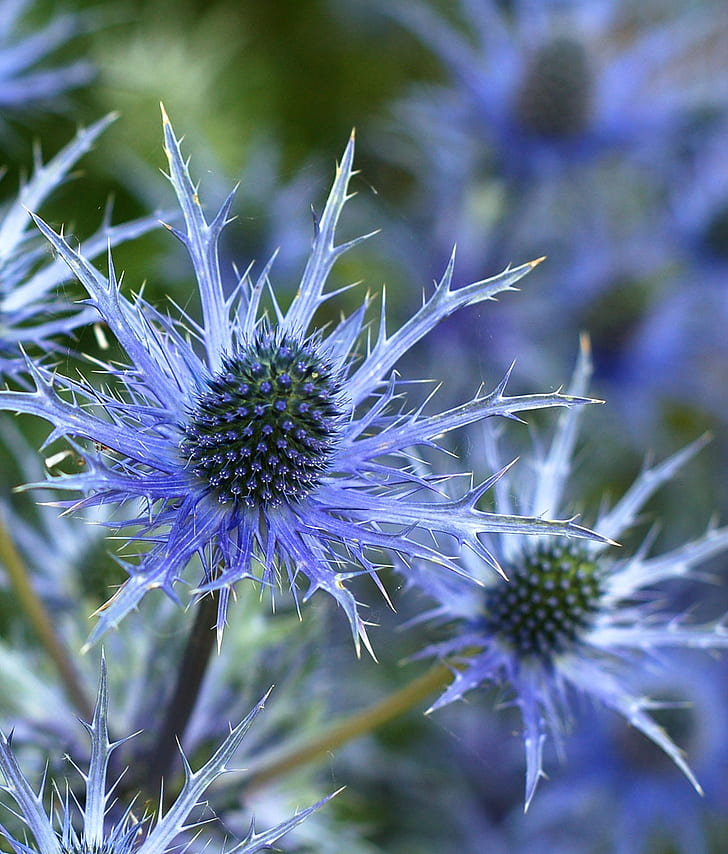
Does this approach really work? I suppose it depends on the way you measure it. It won’t actually prevent outbreaks of aphids entirely, but there’s plenty of horticultural science to back up the approach of introducing and supporting beneficial insect populations to dampen or balance out these population booms. In any case, in my view it’s a far better alternative than trying to wipe out pests with repeated applications of pesticides – which tend to become less effective over time as the populations develop pesticide resistance. And by the way, if you’d like some more plant suggestions for a balanced garden, here’s a video for you:
